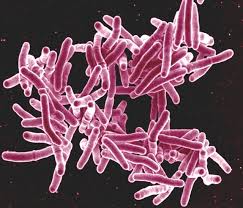Washington: Scientists have found a compound that prevents as well as reverses resistance to a widely used antibiotic for treating tuberculosis — the most lethal infectious disease worldwide.
A growing rise in drug-resistant tuberculosis (TB) is a major obstacle while treating the illness. Back in 2017, about 1.5 million people died of TB.
Researchers at Washington University in the US and Umea University in Sweden have now successfully reversed resistance to isoniazid — the most widely used antibiotic for treating TB.
The research, published in the journal Proceedings of the National Academy of Sciences, was conducted in causal bacteria — Mycobacterium tuberculosis growing in the lab.
Once inside the body, the bacteria morph into a tougher form that can withstand more stress and is harder to kill. So, instead of looking for new and better antibiotics, the researchers decided to look for compounds that prevent the bacteria from toughening up.
When put in a low-oxygen environment to mimic the stressful conditions TB bacteria encounter inside the body, the bacteria come together and form a thin film called a ‘bio-film’ that is resilient to not only low-oxygen conditions but also to antibiotics and other stressors.
After screening 91 compounds that share a core chemical structure that inhibits biofilms in other bacterial species, they found one compound – C 10 that did not kill the TB bacteria and also prevented them from forming a bio-film.
Using the compound in conjunction with isoniazid could potentially restore the antibiotic’s effectiveness in people with drug-resistant tuberculosis.
The compound also may bolster the antibiotic’s power to kill TB bacteria — even those sensitive to drugs — which implies doctors could now consider reducing the onerous six-month treatment regimen they prescribe today.
“It is very hard for people to comply with such a long regimen. They have side effects. The longer people have to be on antibiotics, the more issues with patient compliance you get, and that can lead to drug resistance and treatment failure,” said Christina Stallings, an associate professor at the Washington University.
“Here, we’ve found a compound that sensitizes bacteria to an antibiotic, prevents drug resistance from arising, and even reverses drug resistance — at least in the lab,” she added.
According to Stallings, when turned into a drug, the compound may result in making the current therapies more effective.
Further experiments showed that blocking bio-film formation with C10 made the bacteria easier to kill with antibiotics and even curbed the development of antibiotic resistance.
In addition, one out of one million TB bacteria spontaneously become resistant to isoniazid when grown under typical laboratory conditions. However, when the researchers grew TB bacteria with isoniazid and the compound, the drug-resistant mutant bacteria never arose.
As of now, the compound is not ready to be used in people or even tested in animals, Stallings cautioned.
The researchers are still figuring out whether the compound is safe and how it might be processed by the body.
PTI






































